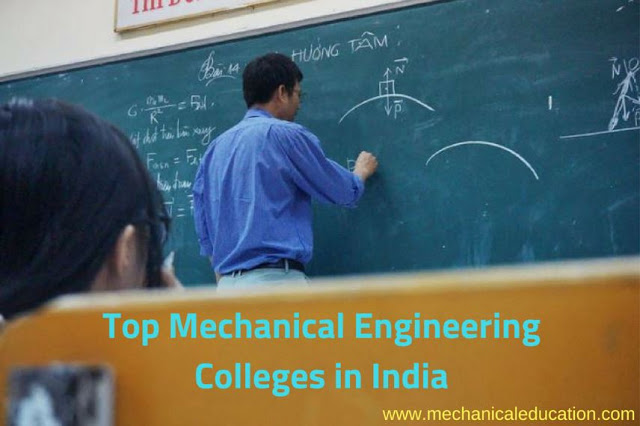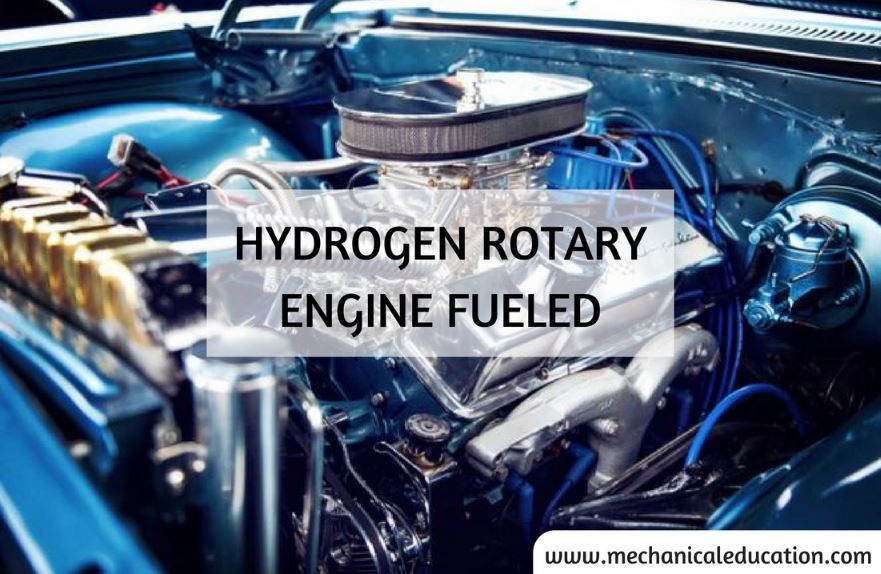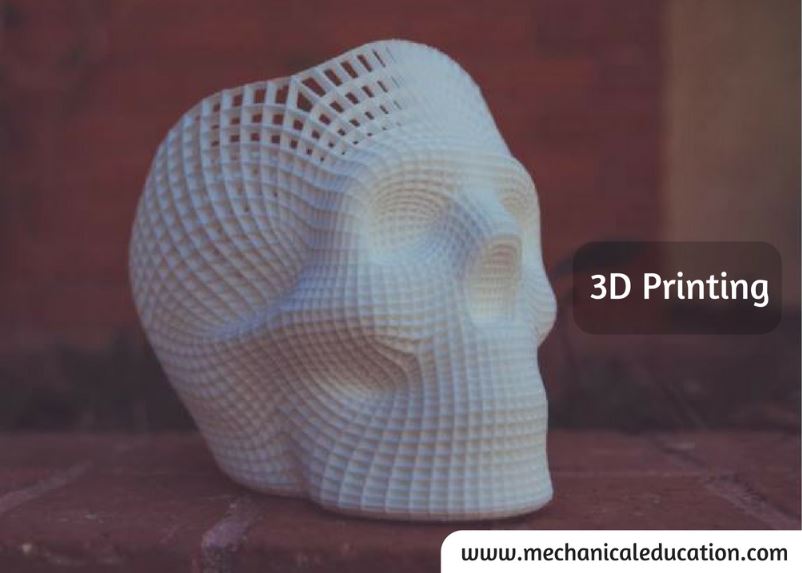A gas turbine is a type of internal combustion engine that converts the chemical energy of fuel and air into mechanical energy through a series of physical and chemical processes. Gas turbines are widely used in a variety of applications, including power generation, aviation, marine propulsion, and industrial processes.
Gas turbines work on the Brayton cycle, which is a thermodynamic cycle that involves four processes: compression, heating, expansion, and cooling. The cycle begins with the compression of air, which is drawn into the gas turbine through an inlet system and compressed by a series of rotating blades in the compressor section. The compressed air is then directed to the combustion chamber, where it is mixed with fuel and ignited.
The combustion process produces high-temperature and high-pressure gases, which expand and flow through the turbine section. The turbine section is composed of a series of rotating blades that extract energy from the hot gases as they flow over them, converting the thermal energy into mechanical energy. The turbine is connected to a generator or mechanical device, which uses the mechanical energy to produce electricity or do work.
After passing through the turbine, the hot gases are directed to the exhaust system, where they are expelled into the atmosphere. Some gas turbine designs incorporate a heat recovery system, which recovers the waste heat from the exhaust gases to produce additional energy or to provide process heat.
The components of a gas turbine can vary depending on the specific application, but the basic components include a compressor, a combustion chamber, and a turbine. Other components may include a fuel system, an inlet system, an exhaust system, and a control system.
The compressor is the first component of a gas turbine, and it is responsible for compressing the incoming air to increase its pressure and temperature. Compressors can be designed in different configurations, such as centrifugal or axial flow, and can be composed of multiple stages or sections to achieve the desired pressure ratio.
The combustion chamber is the second component of a gas turbine, and it is where the compressed air is mixed with fuel and ignited. The combustion process produces high-temperature and high-pressure gases, which are directed to the turbine section. The combustion chamber can be of different types, such as can-annular or annular, and can incorporate different fuel injection and combustion control systems.
The turbine section is the third component of a gas turbine, and it is where the mechanical energy is extracted from the high-temperature gases produced in the combustion chamber. Turbines can be composed of multiple stages or sections, each with a set of rotating blades and stationary vanes. The number of turbine stages and the blade design can vary depending on the application and the desired efficiency and power output.
Gas turbines can operate on different types of fuels, including natural gas, diesel, kerosene, and biofuels. The fuel system is responsible for delivering the fuel to the combustion chamber at the correct pressure and flow rate. The fuel system can also incorporate other components, such as fuel heaters and filters, to ensure proper fuel atomization and combustion.
The inlet system is responsible for supplying clean and filtered air to the compressor. The inlet system can include filters, screens, and anti-icing systems to ensure proper compressor operation and prevent damage from foreign object ingestion or icing conditions.
The exhaust system is responsible for expelling the high-temperature gases produced in the combustion chamber into the atmosphere. The exhaust system can incorporate noise reduction systems and heat recovery systems to improve the overall efficiency and reduce emissions.
The control system is responsible for monitoring and controlling the gas turbine operation, including the speed, temperature, pressure, and fuel flow rate. The control system can incorporate different types of sensors, actuators, and control algorithms to achieve the desired performance and reliability.
In conclusion, gas turbines are internal combustion engines that convert fuel and air into mechanical energy through a series of physical and chemical processes, operating on the Brayton cycle. Gas turbines are used in a variety of applications, including power generation, aviation, marine propulsion, and industrial processes. The basic components of a gas turbine include a compressor, a combustion chamber, and a turbine, along with other components such as a fuel system, inlet system, exhaust system, and control system. Gas turbines can operate on different types of fuels, and their efficiency and power output can vary depending on the design and application. The development of gas turbines has led to significant advances in energy production and technology, and they continue to be an important component in meeting the world’s growing energy demands.
What are the main components of a gas turbine?
A gas turbine is a type of internal combustion engine that is used to produce mechanical power from the combustion of fuel and air. Gas turbines are commonly used in power generation, aviation, marine propulsion, and industrial applications. They are preferred over other types of engines because of their high power-to-weight ratio, high efficiency, and reliability.
The main components of a gas turbine include a compressor, a combustion chamber, and a turbine. Each of these components has a unique role to play in the operation of the gas turbine.
The compressor is the first component of a gas turbine. Its primary function is to compress the incoming air to increase its pressure and temperature. The compressed air is then directed to the combustion chamber, where it is mixed with fuel and ignited. The combustion process produces hot gases that expand and flow through the turbine, which drives the compressor and other mechanical devices connected to the gas turbine.
The compressor is typically made up of several stages or sections, each with a set of rotating blades and stationary vanes. The rotating blades are mounted on a rotor shaft, which is connected to the turbine. The stationary vanes are mounted in the compressor casing and are designed to guide the flow of air through the compressor. As the air flows through the compressor, it is compressed in each stage, with the pressure and temperature increasing as the air moves from one stage to the next.
The combustion chamber is the second component of a gas turbine. It is where the compressed air is mixed with fuel and ignited to produce hot gases that drive the turbine. The combustion chamber is typically located between the compressor and the turbine, and it is designed to contain the combustion process while maintaining a high level of efficiency. The combustion process is controlled by the fuel and air ratio, which is critical to the overall performance of the gas turbine.
The combustion chamber can be of several types, including can-annular, annular, and tubular. The can-annular combustion chamber consists of a series of combustion chambers arranged in a circular pattern around the turbine. Each combustion chamber is separate and has its own fuel injection system. The annular combustion chamber is a single combustion chamber that encircles the turbine. The tubular combustion chamber is a long tube that runs the length of the turbine.
The turbine is the third component of a gas turbine. Its primary function is to extract energy from the hot gases produced in the combustion chamber and convert it into mechanical energy to drive the compressor and other mechanical devices. The turbine is made up of several stages or sections, each with a set of stationary vanes and rotating blades. The stationary vanes are designed to guide the flow of hot gases onto the rotating blades, which extract energy from the gases as they pass over them.
The turbine blades are typically made of high-temperature alloys, such as nickel-based superalloys, which can withstand the high temperatures and stresses associated with the combustion process. The blades are mounted on a rotor shaft, which is connected to the compressor and other mechanical devices. The number of turbine stages can vary depending on the application, with gas turbines used in aviation typically having fewer stages than those used in power generation.
In addition to the compressor, combustion chamber, and turbine, gas turbines can also have other components, including air inlet systems, exhaust systems, and fuel systems. The air inlet system is designed to supply clean, filtered air to the compressor. The exhaust system is designed to remove the hot gases produced in the combustion process and direct them out of the gas turbine. The fuel system is designed to deliver fuel to the combustion chamber at the correct pressure and flow rate.
In conclusion, the main components of a gas turbine include a compressor, a combustion chamber, and a turbine. Each of these components plays a critical role in the operation of the gas turbine, with the compressor compressing the incoming
Why are gas turbines used?
Gas turbines are used in a wide range of applications due to their numerous advantages over other types of engines. The main reasons for their widespread use are:
- High power-to-weight ratio: Gas turbines have a high power-to-weight ratio, which means that they can produce a lot of power relative to their size and weight. This makes them ideal for use in aircraft, where weight is a critical factor.
- Quick start-up and response time: Gas turbines can start up quickly and respond to changes in power demand rapidly, which makes them suitable for use in power generation and industrial applications.
- High efficiency: Gas turbines are highly efficient, especially at high power levels. This means that they can convert a large proportion of the fuel energy into useful work, reducing fuel consumption and operating costs.
- Low emissions: Gas turbines emit lower levels of pollutants than other types of engines, making them environmentally friendly.
- Versatility: Gas turbines can run on a variety of fuels, including natural gas, diesel, and biofuels, which makes them flexible and adaptable to different applications and fuel sources.
Overall, gas turbines are a popular choice for applications where high power output, efficiency, and low emissions are important considerations.
Advantages of gas turbines?
Gas turbines offer several advantages over other types of engines. Some of the key advantages of gas turbines are:
- High power density: Gas turbines have a high power-to-weight ratio, which means that they can generate a lot of power relative to their size and weight. This makes them ideal for use in applications where space and weight are limited, such as aircraft and marine propulsion.
- Rapid start-up and response time: Gas turbines can start up quickly and respond to changes in power demand rapidly, making them suitable for use in applications where quick response times are important, such as in power generation and industrial processes.
- High efficiency: Gas turbines are highly efficient, especially at high power levels. They can convert a large proportion of the fuel energy into useful work, reducing fuel consumption and operating costs.
- Low emissions: Gas turbines emit lower levels of pollutants than other types of engines, making them environmentally friendly. They also have lower carbon dioxide emissions compared to coal and other fossil fuels, which can help reduce greenhouse gas emissions.
- Versatility: Gas turbines can run on a variety of fuels, including natural gas, diesel, and biofuels, which makes them flexible and adaptable to different applications and fuel sources.
- Reliability: Gas turbines are known for their high reliability, with some engines operating for tens of thousands of hours without major maintenance or repair.
Overall, gas turbines offer a combination of high power density, efficiency, low emissions, and versatility, making them a popular choice for a wide range of applications, including power generation, marine propulsion, and industrial processes.
Disadvantages of gas turbines?
While gas turbines offer many advantages, they also have some disadvantages that should be considered when evaluating their use. Some of the key disadvantages of gas turbines are:
- High capital cost: Gas turbines are expensive to purchase and install, particularly for smaller applications. The high capital cost can make them less economically viable for some applications.
- Reduced efficiency at lower power levels: Gas turbines are most efficient at high power levels, but their efficiency decreases at lower power levels. This can make them less suitable for applications with variable power demand or where power demand is low.
- Maintenance requirements: Gas turbines require regular maintenance to operate at their best, including cleaning, inspection, and replacement of components. Maintenance can be costly and time-consuming, particularly for large engines.
- Noise and vibration: Gas turbines can generate high levels of noise and vibration, particularly at high power levels. This can be a problem in some applications, particularly in urban areas or where noise regulations are in place.
- Environmental impact: While gas turbines emit lower levels of pollutants than other types of engines, they still emit carbon dioxide and other greenhouse gases. The environmental impact of gas turbines is an important consideration, particularly in applications where emissions are tightly regulated.
Overall, gas turbines offer many advantages, but they also have some drawbacks that should be considered when evaluating their use. The high capital cost, reduced efficiency at lower power levels, maintenance requirements, noise and vibration, and environmental impact are all factors that should be weighed against the benefits of gas turbine technology.
Which gas is used in a gas turbine?
Gas turbines can run on a variety of gases, including natural gas, propane, butane, and synthetic gases derived from coal, biomass, or waste. However, natural gas is the most commonly used fuel in gas turbines.
Natural gas is a clean-burning fuel that contains mainly methane, with smaller amounts of ethane, propane, and butane. It is readily available, relatively inexpensive, and produces fewer emissions than other fossil fuels.
When natural gas is used as a fuel in a gas turbine, it is burned in a combustion chamber, which generates high-pressure and high-temperature gases that expand through the turbine blades, producing rotational energy that can be used to generate electricity, propel a vehicle, or power industrial processes.
What is the speed of a gas turbine?
The speed of a gas turbine can vary depending on its design, size, and application. However, in general, gas turbines operate at high speeds, typically in the range of tens of thousands of revolutions per minute (RPM).
The rotational speed of a gas turbine is determined by its operating conditions, such as the pressure and temperature of the working fluid, the size and shape of the turbine blades, and the speed of the compressor that supplies air to the combustion chamber.
Gas turbines used in power generation typically operate at speeds of around 3,000-3,600 RPM, while gas turbines used in aircraft engines can operate at much higher speeds, typically in the range of 15,000-30,000 RPM.
The speed of a gas turbine is an important factor in its performance, with higher speeds typically leading to higher power output, but also higher stresses on the engine components. As a result, gas turbines are designed to operate within specific speed ranges that balance performance, efficiency, and durability.
What is the function of the turbine?
The primary function of a turbine is to convert the energy in a fluid (such as steam, gas, or water) into rotational motion. Turbines consist of a set of rotating blades mounted on a shaft, which is connected to a generator or other mechanical device.
In a gas turbine, the turbine is the component that extracts energy from the hot, high-pressure gases generated by the combustion process. The gases flow through the turbine blades, which are shaped to extract as much energy as possible from the flow, causing the blades and shaft to rotate.
The rotational energy generated by the turbine is then used to drive a compressor, which supplies air to the combustion chamber, and to power other mechanical devices, such as a generator or propulsion system.
In other types of turbines, such as steam turbines or water turbines, the function is similar, but the working fluid is different. In a steam turbine, for example, steam is used to drive the turbine blades, while in a water turbine, the kinetic energy of falling water is used to drive the blades.
Overall, the function of a turbine is to convert the energy in a fluid into rotational motion, which can be used to power mechanical devices and generate electricity.
What is the size of a gas turbine?
Gas turbines can range in size from small microturbines, which are typically a few kilowatts in capacity, to large industrial turbines that can generate hundreds of megawatts of power. The physical size of a gas turbine can vary depending on its power output, design, and intended use.
For example, a microturbine, which is typically used for small-scale power generation or cogeneration applications, can be as small as a suitcase and weigh less than 100 pounds. These small turbines are often used in commercial or residential buildings, or in remote areas where grid power is not available.
On the other end of the scale, large industrial gas turbines used in power generation can be several stories tall and weigh several hundred tons. These massive turbines are used to generate electricity in utility-scale power plants, and can be found in a variety of applications, including combined cycle power plants, simple cycle power plants, and cogeneration plants.
The size of a gas turbine is an important consideration in its design and installation, as larger turbines require more space, infrastructure, and support systems to operate. The size of the turbine can also affect its efficiency and performance, with larger turbines typically having higher power output and better efficiency than smaller ones.
What is the capacity of a gas turbine?
The capacity of a gas turbine refers to its maximum power output, which is typically measured in megawatts (MW) or gigawatts (GW). The capacity of a gas turbine can vary depending on its size, design, and intended use, but can range from a few megawatts to hundreds of megawatts.
Small gas turbines, such as microturbines used for small-scale power generation or cogeneration applications, typically have a capacity of a few kilowatts to a few megawatts. These turbines are often used in commercial or residential buildings, or in remote areas where grid power is not available.
Large industrial gas turbines used in power generation can have a capacity of several hundred megawatts. These massive turbines are used to generate electricity in utility-scale power plants, and can be found in a variety of applications, including combined cycle power plants, simple cycle power plants, and cogeneration plants.
The capacity of a gas turbine is an important factor in its performance and cost-effectiveness. Turbines with higher capacity typically have higher efficiency and lower operating costs per unit of power output. However, larger turbines also require more space, infrastructure, and support systems to operate, which can increase their installation and maintenance costs.
What is the efficiency of a gas turbine?
The efficiency of a gas turbine is a measure of how effectively it converts the energy in the fuel into useful mechanical power or electricity. The efficiency of a gas turbine can vary depending on its design, operating conditions, and fuel type, but in general, modern gas turbines have high efficiency and can achieve overall thermal efficiencies of up to 60%.
Gas turbines used in power generation typically have higher efficiency than those used in other applications, such as aircraft propulsion or industrial processes. This is because power generation turbines are designed to operate at steady-state conditions, which allows them to operate at higher temperatures and pressures, and therefore extract more energy from the fuel.
The efficiency of a gas turbine is affected by a number of factors, including the compression ratio of the compressor, the temperature and pressure of the working fluid at various stages of the turbine, and the combustion process used to generate heat. Other factors, such as the quality of the fuel and the maintenance of the turbine, can also affect its efficiency over time.
Overall, gas turbines are known for their high efficiency and ability to generate large amounts of power with relatively low emissions. This makes them an attractive option for power generation, particularly in applications where clean, reliable, and efficient power is needed.
What is the pressure of a gas turbine?
The pressure of a gas turbine can vary depending on its design, operating conditions, and intended use. Gas turbines typically operate at high pressures to extract the maximum amount of energy from the working fluid, which can be either air or a mixture of air and fuel.
In a gas turbine, the compressor compresses the working fluid, typically air, to a high pressure before it enters the combustion chamber. The combustion process then raises the temperature and pressure of the working fluid further, generating a high-velocity stream of hot gases that flows through the turbine blades.
The pressure of the working fluid at various stages of the gas turbine can be measured in terms of pressure ratio, which is the ratio of the discharge pressure to the inlet pressure of the compressor. Modern gas turbines can have pressure ratios ranging from 15:1 to 50:1, depending on their design and intended use.
The high pressures generated in a gas turbine allow it to extract more energy from the working fluid and generate more power with higher efficiency. However, high pressures also place greater stress on the components of the turbine, requiring careful design and maintenance to ensure safe and reliable operation.
What is the ratio of gas turbines?
The ratio of a gas turbine typically refers to the pressure ratio, which is the ratio of the discharge pressure to the inlet pressure of the compressor. The pressure ratio is an important performance parameter of a gas turbine, as it affects the efficiency, power output, and operating characteristics of the turbine.
The pressure ratio of a gas turbine can vary depending on its design, operating conditions, and intended use. Modern gas turbines can have pressure ratios ranging from 15:1 to 50:1, with higher pressure ratios generally resulting in higher efficiency and power output.
The pressure ratio is determined by the design of the compressor and the combustion chamber, as well as the operating conditions of the turbine. Higher pressure ratios require more stages of compression, which can increase the size, weight, and complexity of the compressor.
In addition to the pressure ratio, other ratios may be used to describe the performance of a gas turbine, such as the bypass ratio for turbofan engines used in aircraft propulsion. The bypass ratio is the ratio of the mass of air that bypasses the combustion chamber to the mass of air that passes through the turbine, and is a key factor in determining the fuel efficiency and noise level of the engine.
How do you calculate a gas turbine?
The performance of a gas turbine can be calculated using various parameters, such as its power output, thermal efficiency, and pressure ratio. The calculations involved in determining the performance of a gas turbine depend on its design, operating conditions, and intended use. Here are some common calculations involved in determining the performance of a gas turbine:
- Power output: The power output of a gas turbine can be calculated using the following equation:
Power output = Mass flow rate x Specific enthalpy difference
Where mass flow rate is the rate at which the working fluid (usually air) flows through the turbine, and specific enthalpy is the amount of heat energy absorbed by the working fluid per unit mass. The specific enthalpy difference is the difference between the specific enthalpy of the working fluid at the inlet and outlet of the turbine. - Thermal efficiency: The thermal efficiency of a gas turbine is a measure of how effectively it converts the energy in the fuel into useful mechanical power or electricity. The thermal efficiency can be calculated using the following equation:
Thermal efficiency = (Power output / Heat input) x 100%
Where heat input is the total heat energy supplied to the turbine, usually in the form of fuel. - Pressure ratio: The pressure ratio of a gas turbine is the ratio of the discharge pressure to the inlet pressure of the compressor. The pressure ratio can be calculated using the following equation:
Pressure ratio = Discharge pressure / Inlet pressure
Where the inlet pressure is the pressure of the working fluid entering the compressor, and the discharge pressure is the pressure of the working fluid leaving the compressor.
These are just a few examples of the calculations involved in determining the performance of a gas turbine. The actual calculations involved can be more complex and may involve various factors, such as temperature, humidity, and fuel properties.
What are the main parameters of a gas turbine?
The main parameters of a gas turbine are:
- Power output: This is the amount of mechanical or electrical power that the gas turbine can generate. The power output of a gas turbine is influenced by various factors such as the size and design of the turbine, the pressure ratio, and the operating conditions.
- Thermal efficiency: This is a measure of how effectively the gas turbine can convert the energy in the fuel into useful mechanical or electrical power. The thermal efficiency of a gas turbine is influenced by factors such as the pressure ratio, turbine design, combustion efficiency, and the temperature of the working fluid.
- Pressure ratio: This is the ratio of the discharge pressure to the inlet pressure of the compressor. The pressure ratio of a gas turbine is a key performance parameter and is influenced by factors such as the design of the compressor, the temperature of the working fluid, and the number of compressor stages.
- Exhaust gas temperature: This is the temperature of the exhaust gases leaving the gas turbine. The exhaust gas temperature is influenced by factors such as the combustion efficiency, the fuel used, and the pressure ratio.
- Mass flow rate: This is the rate at which the working fluid (usually air) flows through the gas turbine. The mass flow rate is influenced by factors such as the size and design of the turbine and the operating conditions.
- Inlet temperature: This is the temperature of the working fluid entering the gas turbine. The inlet temperature is a key operating parameter and is influenced by factors such as the ambient temperature, the compressor design, and the type of fuel used.
- Fuel consumption rate: This is the rate at which fuel is consumed by the gas turbine to generate power. The fuel consumption rate is influenced by factors such as the thermal efficiency of the gas turbine, the type of fuel used, and the operating conditions.
These are some of the main parameters of a gas turbine that are used to measure its performance and determine its suitability for various applications.
Frequently Asked Questions
1. What is a gas turbine?
A gas turbine is a type of internal combustion engine that converts fuel energy into mechanical energy through the continuous combustion of a compressed air-fuel mixture.
2. How does a gas turbine work?
Gas turbines operate on the principle of continuous combustion. Air is compressed in the compressor, mixed with fuel, and ignited in the combustion chamber. The resulting high-temperature, high-pressure gas is expanded through a turbine, producing mechanical power.
3. What are the main components of a gas turbine engine?
The main components include a compressor to pressurize air, a combustion chamber for fuel combustion, and a turbine to extract energy from the high-temperature gas. There is also a shaft connecting these components, driving the compressor and any external loads.
4. What fuels are commonly used in gas turbines?
Gas turbines can use a variety of fuels, including natural gas, aviation fuel, diesel, and biofuels. The choice of fuel depends on the specific application and availability.
5. What are the applications of gas turbines?
Gas turbines are used in various applications, including aircraft propulsion, power generation in electricity plants, marine propulsion, and industrial processes requiring mechanical power.
6. What is the Brayton cycle, and how does it relate to gas turbines?
The Brayton cycle is the thermodynamic cycle that describes the operation of a gas turbine. It consists of isentropic compression, constant-pressure combustion, and isentropic expansion. Gas turbines follow this cycle to convert thermal energy into mechanical work.
7. How do gas turbines achieve high efficiency in power generation?
Gas turbines achieve high efficiency by maintaining a continuous combustion process and utilizing the energy in the high-temperature gas to drive the turbine and generate power.
8. What is the role of the compressor in a gas turbine?
The compressor increases the pressure of incoming air before it enters the combustion chamber. This compression is essential for efficient combustion and helps in achieving higher power output.
9. How is the efficiency of a gas turbine engine measured?
Gas turbine efficiency is often measured by specific fuel consumption (SFC), which represents the amount of fuel required to produce a unit of thrust or power. Lower SFC values indicate higher efficiency.
10. What are the advantages of using gas turbines?
Gas turbines offer advantages such as high power-to-weight ratio, rapid start-up and shutdown, and the ability to operate on various fuels. They are also known for their versatility in different applications, from aviation to power generation.




